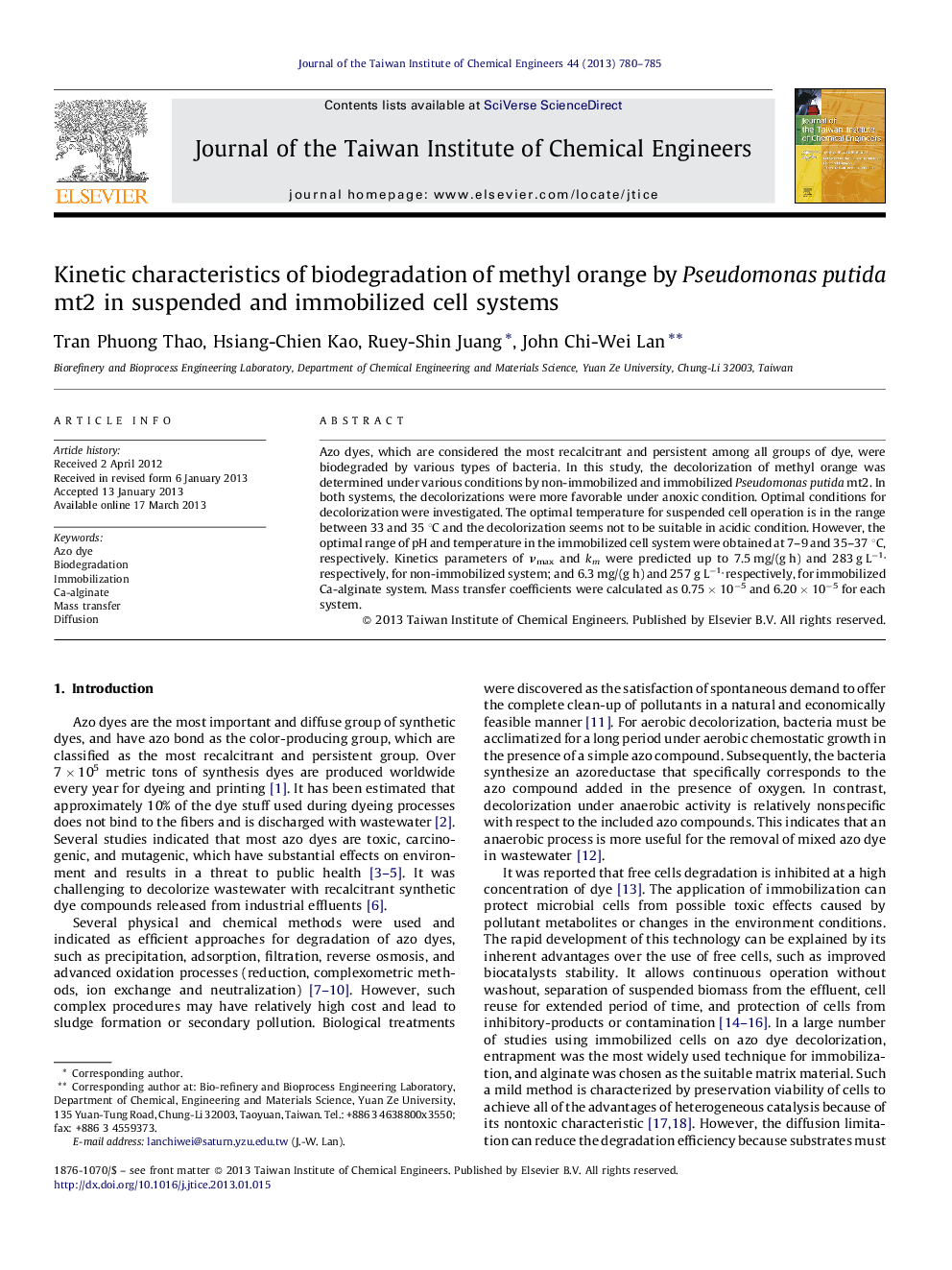| Article ID | Journal | Published Year | Pages | File Type |
|---|---|---|---|---|
| 690851 | Journal of the Taiwan Institute of Chemical Engineers | 2013 | 6 Pages |
Azo dyes, which are considered the most recalcitrant and persistent among all groups of dye, were biodegraded by various types of bacteria. In this study, the decolorization of methyl orange was determined under various conditions by non-immobilized and immobilized Pseudomonas putida mt2. In both systems, the decolorizations were more favorable under anoxic condition. Optimal conditions for decolorization were investigated. The optimal temperature for suspended cell operation is in the range between 33 and 35 °C and the decolorization seems not to be suitable in acidic condition. However, the optimal range of pH and temperature in the immobilized cell system were obtained at 7–9 and 35–37 °C, respectively. Kinetics parameters of νmax and km were predicted up to 7.5 mg/(g h) and 283 g L−1, respectively, for non-immobilized system; and 6.3 mg/(g h) and 257 g L−1, respectively, for immobilized Ca-alginate system. Mass transfer coefficients were calculated as 0.75 × 10−5 and 6.20 × 10−5 for each system.
► We compare biodegradation of azo dye, methyl orange, in the suspended and immobilized cell systems. ► Under anaerobic and static operation is favorable to achieve high efficiency of biodegradation. ► High diffusion coefficient was determined in immobilized cell system. ► An unstable character of Ca-alginate particle under static operation was discovered.
